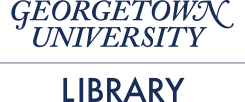Fairchild Gallery and Special Collections Gallery
Paul Muldoon: The Joseph M. Hassett Collection

February-May 2024
This exhibition will present Joseph Hassett's personal collection of rare books by contemporary Northern Irish poet, Paul Muldoon. Hassett recently donated this collection to the Booth Family Center for Special Collections. The objects on display will emphasize the major movements in Muldoon's work: from his early poetry of the Troubles; to his transatlantic work in the wake of his migration to the United States in 1987; his collaborations with visual artists, printmakers, and composers; his engagements with postcolonial politics and the Global South; as well as the creative community of artists and writers that sustained him. The exhibition will give special attention to members of Muldoon's creative community here at Georgetown University. This exhibition was made possible by the Global Irish Studies Initiative.
